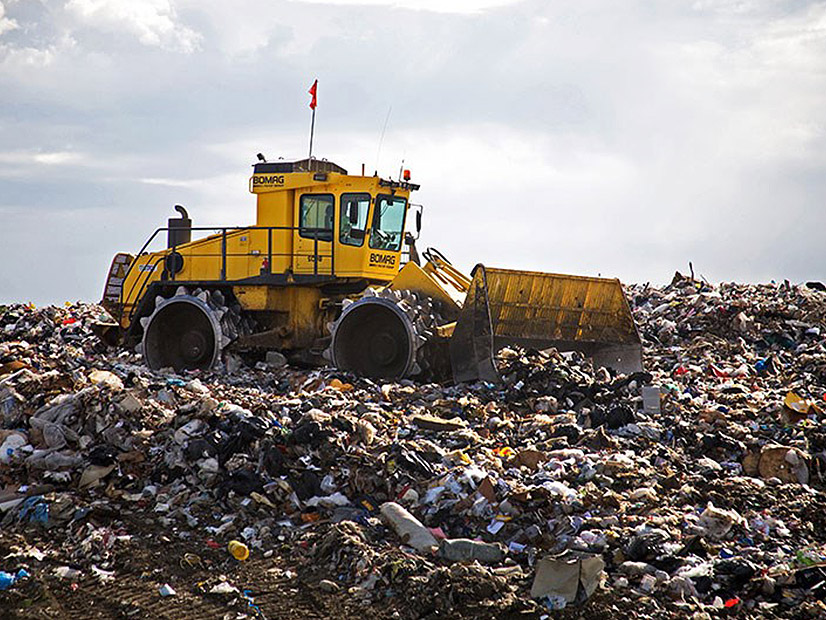
Washington’s Senate last week voted 30-17 to approve a revised House bill to regulate methane emissions from landfills.
The amended bill (HB 1663) now goes back to the House, which passed the original 57-40 on Feb. 11. Most, but not all, legislative Republicans have opposed the measure.
“We know that methane is one of the deadliest greenhouse gases,” Sen. Liz Lovelett (D), who shepherded the bill through the Senate, said Friday.
“Methane stays in place for 10 years instead of 100 years, but it has 100 times the impact of carbon emissions,” HB 1663 sponsor Rep. Davina Duerr (D) said at a Jan. 10 hearing on the bill, which would require the capture of methane emissions from Washington’s landfills.
On Friday, Sen. Shelly Short (R) said Republicans want more incentives built into the legislation to encourage converting captured methane into energy.
At the Feb. 11 House vote, Rep. Mary Dye (R), the GOP environmental issues leader in the House, argued that it is a mistake to regulate methane in landfills before gas-capture technology is more advanced. “This bill is going into an area that we have not thoroughly vetted on their impacts to the communities. … When you put a regulation in, you stop innovation at that moment,” she contended.
In broad strokes, Duerr’s bill would require the owner or operator of an active covered landfill with 450,000 tons or more of waste in place to calculate the quantity of gas generated by the landfill. The same requirements would apply to closed landfills holding at least 750,000 tons. Washington has 24 landfills that store more than 450,000 tons of waste, according to the state’s Department of Ecology. And it has at least a couple dozen — mostly closed —that store less than 450,000 tons.
If a landfill’s emissions calculations exceed 3 million Btu per hour, the operator would have to install and operate a gas collection and control system. A collection system would also be required if methane emissions hit 500 parts per million (ppm), as determined by instantaneous surface emissions monitoring, or if an average methane concentration reaches 25 ppm based on integrated surface emissions monitoring.
The bill does not apply to landfills that handle solely hazardous wastes or only inert waste or non-decomposable wastes.
California and Oregon already have similar landfill emissions rules in place. (See Oregon Adopts Nation’s Strictest Landfill Emission’s Rules.)
Methane accounted for 10% of the nation’s greenhouse gas emissions in 2019, according to the EPA. EPA figures show that landfills account for 17% of the nation’s emitted methane, behind fuel production at 30% and livestock-related emissions at 27%. A 2021 Penn State study concluded that EPA might be underestimating the nation’s methane emissions.
Cutting Waste
The Senate on Thursday also voted 34-14 to pass another amended House bill that would cut methane emissions from the state’s landfills by reducing the waste placed into them. The tweaked legislation has also gone back to the House for approval.
The bill (HB 1799) by Rep. Joe Fitzgibbon (D), chairman of the House Environment and Energy Committee, calls for the state to reduce the volume of organic material dumped into landfills to 75% below 2015 levels by 2030. Organic material — manure, yard wastes, food wastes, wood and garden wastes — contribute to the production of methane.
The House passed the bill 52-46 mostly along party lines on Feb. 11.
HB 1799 would not apply to cities and counties with fewer than 25,000 people or those that produce less than 5,000 tons of wastes annually. Also exempted would be rural areas with a population density of less than 75 people per square mile.
The bill would require a business generating at least 8 cubic yards of organic wastes annually to have an organic materials management plan by Jan. 1, 2024, while businesses generating 4 cubic yards of such waste must implement plans by Jan. 1, 2025. The Ecology Department would be tasked with reviewing the rules in 2026 to determine if they need changes.


